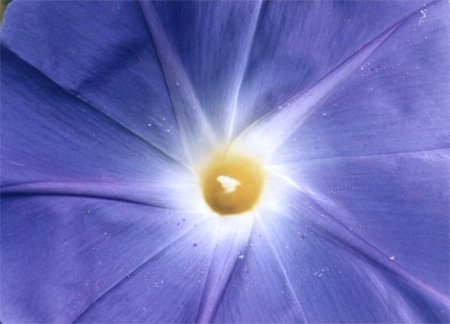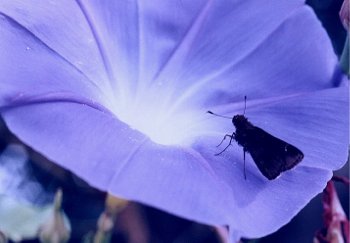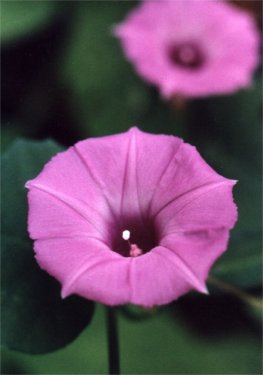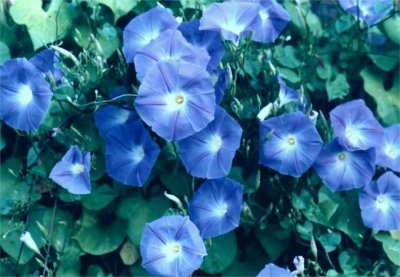Glorious Weeds
by Valerie (September 25, 2000)
Morning glories are not normally thought of as weeds. They are the delightful, fast-growing annuals that one buys as a seed packet every year, enjoys the brilliant color for the summer, then clears out the dead plants in the fall. We grew the traditional annual morning glory (Convolvulus rubrocaerulea) for one summer. Although it bloomed admirably and did very well in the heat of the summer, I was quite disappointed when it failed to reseed the next year and so looked around for an alternative.
There is a naturalized South American native called perennial morning glory, blue dawn flower, or evergreen morning glory (Ipomoea indica), which grows in profusion in a couple of places around here. The flowers are identical to the annual morning glory, but the stems and leaves are much more robust, grow higher, and the roots form thick tubers from which the plants resprout in the spring after freezing back. This morning glory also has the insidious habit of sending out long runners along the ground, which grow quickly and undetected through other vegetation. Because the plant has been imported to gardens around the world, and grows phenomenally when conditions are right, it is now listed as a noxious and invasive weed in several countries, as well as in several southern U.S. states. It would be fair to call it a cross between morning glory and kudzu and it is one of the few vines that can successfully compete with passionflowers, trumpetvine and honeysuckle.   Although they must be cleared from the flower beds regularly, and the dead vines are a mess to clean up after winter freezes, they are certainly worth the extra maintenance for their stunning blue flowers - guaranteed to come back every year. Although they must be cleared from the flower beds regularly, and the dead vines are a mess to clean up after winter freezes, they are certainly worth the extra maintenance for their stunning blue flowers - guaranteed to come back every year.

Another closely related perennial "weed" is the sharp-pod morning glory (Ipomoea trichocarpa), which is a native with small, purple flowers. This vine is more delicate, but rather invasive as well, popping up from underground runners. It also produces plenty of seed, which is how we started it in our gardens. The seed pod has a very sharp point on the end, hence the name. Other names for this plant are coastal morning glory, bindweed, and tie vine. |

